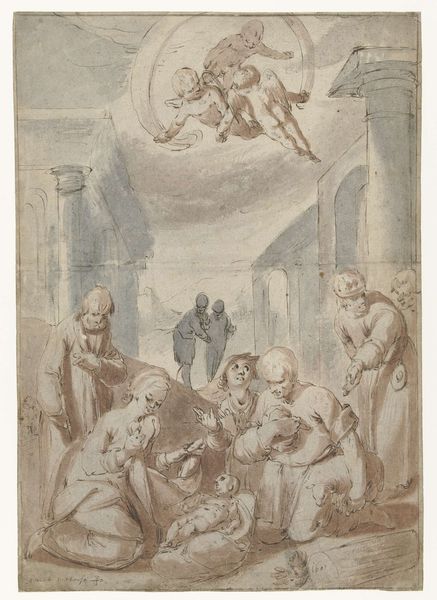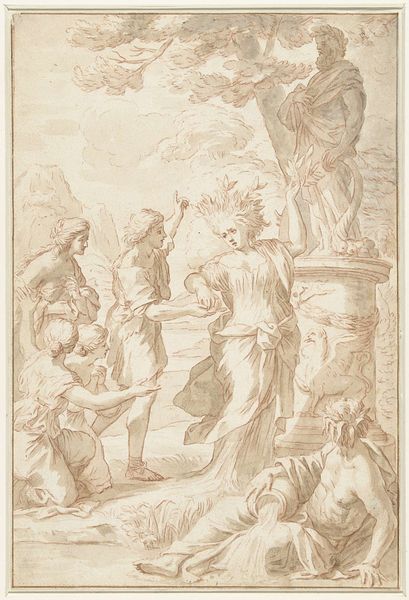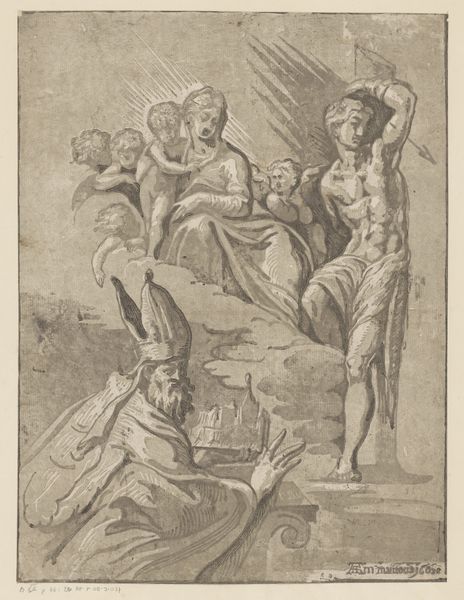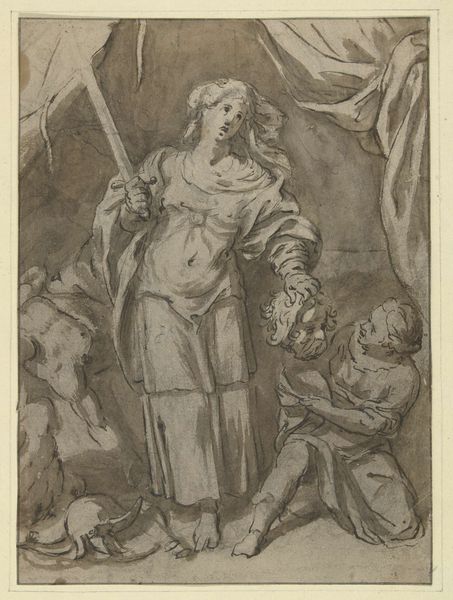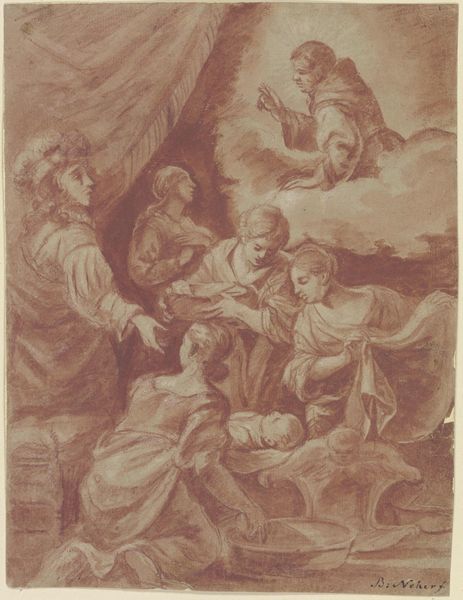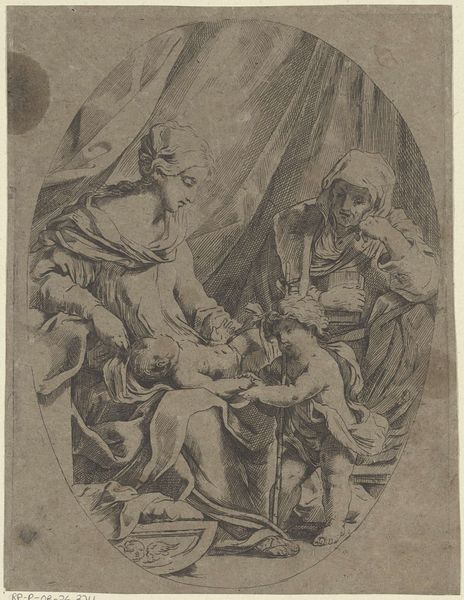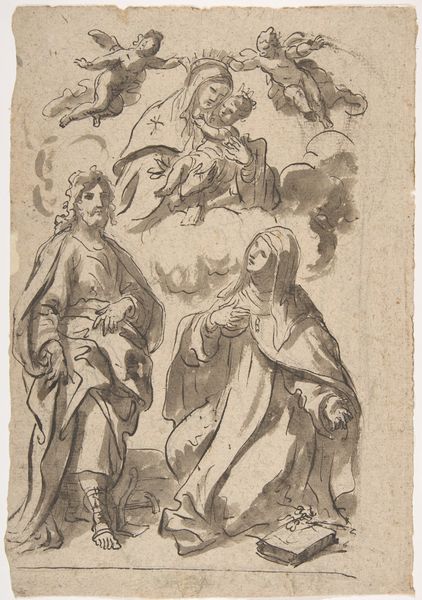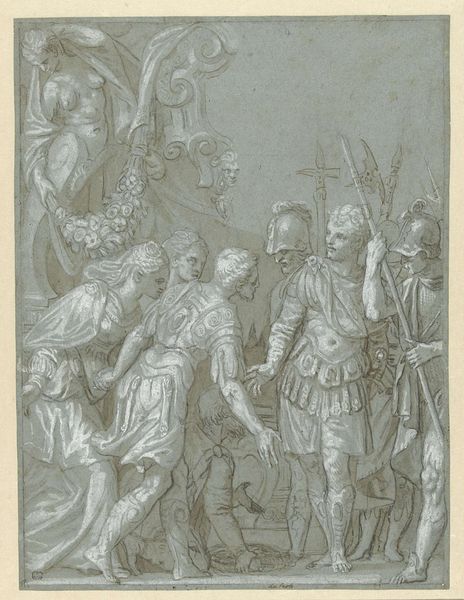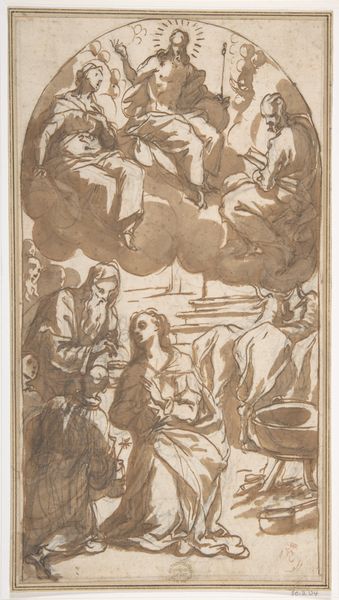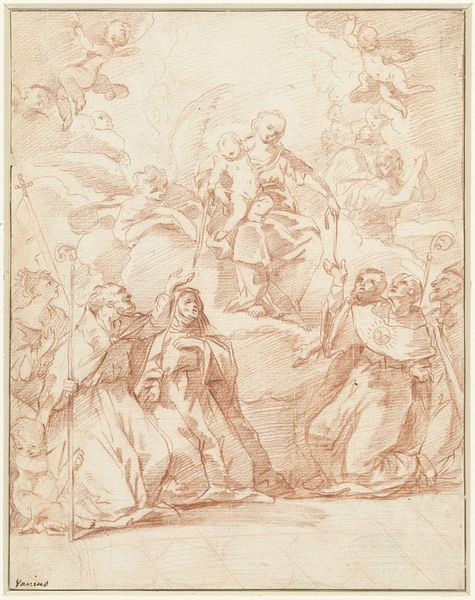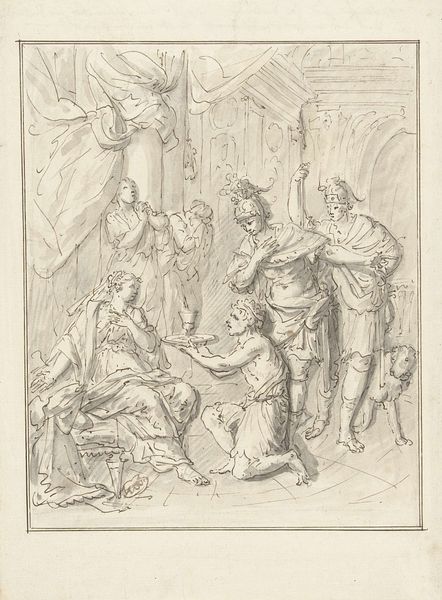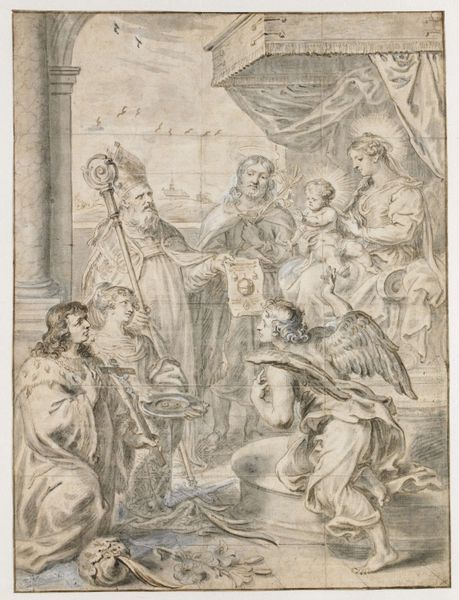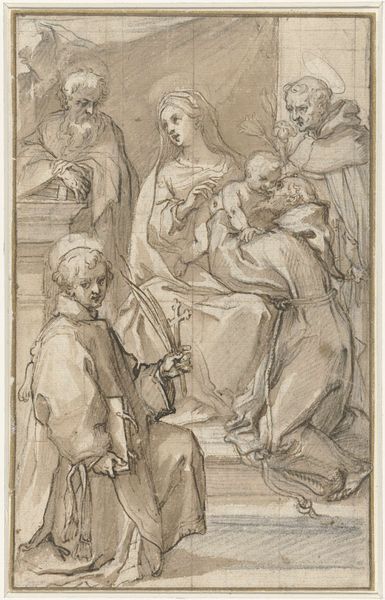
drawing, charcoal
#
drawing
#
charcoal drawing
#
figuration
#
11_renaissance
#
charcoal
#
history-painting
#
italian-renaissance
Dimensions: height 358 mm, width 251 mm
Copyright: Rijks Museum: Open Domain
Curator: Looking at this drawing by Paolo Farinati, created in the 1550s, which we simply call "Design for an Altarpiece", what are your initial impressions? Editor: There's a raw energy to it. Despite the classical subject matter, the medium of charcoal gives it a surprisingly contemporary feel. The figures almost seem to leap off the page in this earthy, monochromatic scheme. It suggests great dynamism for an altarpiece, though. Would this have been for a particularly progressive institution, or community? Curator: Its purpose as a design piece explains some of the loose handling, perhaps. These types of history-painting scenes often reflected the specific ideals, and indeed, politics, of its commissioner. And yes, the altarpiece would be for display in a church and made of either marble, panel, or canvas after a review from a committee within that particular religious order. Editor: We see the Virgin and Child elevated amidst figures who all look upward, beseeching. An archer aims an arrow, likely representing divine love. Given the symbols presented here, it suggests a moment of epiphany, a visual articulation of intense faith and possibly even sacrifice and duty depicted through the man and his garb to the right, no? How typical would an archer figure have been? It almost brings the piece into pagan themes rather than standard high renaissance Catholic presentations. Curator: Yes, you are right. The symbolism runs deep. Eros with his arrow definitely brings in that concept of divine love, but in renaissance circles it was often used allegorically for sacred and profane love simultaneously. The iconography here layers the religious narrative with classical themes, reflecting the Renaissance era's interest in bridging both worlds. I would hazard that while altarpieces remained mostly central themes, mixing in secular, paganistic symbols was definitely becoming more prevalent at the time as artists attempted to find new relevant languages and metaphors for biblical figures. Editor: The convergence of these icons adds significant depth. This really gives you so much more than merely an altarpiece sketch; it gives one a look at a moment in a shifting social, religious, and political culture. I think many of the artistic patrons must have been highly interested in creating these complex artworks to attempt to resolve the issues within their own world. It’s compelling how a preliminary drawing reveals this struggle, and what Farinati included provides invaluable insight into how those charged with creating public imagery shaped that reality. Curator: Indeed. Examining such designs illuminates the public role of art during the period, as art attempted to speak to and reflect shifting spiritual beliefs. This charcoal rendering serves not just as a precursor to a painting, but as a lens through which to see the dynamic forces at play in Renaissance society.
Comments
No comments
Be the first to comment and join the conversation on the ultimate creative platform.
